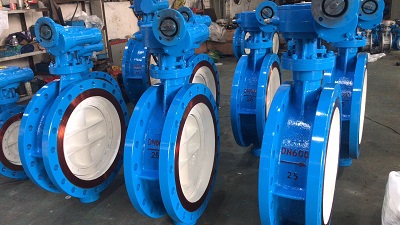The Uses and Features of Blower Safety Valve

What is the Most Common Use of a Blower Safety Valve?
The blower safety valve is used to protect the blower and equipment. When the pressure in the blower and equipment is abnormally raised to a certain value (the opening pressure of the safety valve), the safety valve can automatically open and discharge the medium to prevent the pressure from continuing to rise. When the pressure in the blower and equipment falls to a certain value (the back seat pressure of the safety valve), the safety valve automatically closes.
What are the Features of a Blower Safety Valve?
Compared with a traditional safety valve, a blower safety valve has the following features:
1. Since blower is mainly used for low-pressure air medium, blower safety valve doesn’t have outlet discharge flange. Instead, it uses the small holes evenly distributed around the sanitary valve body to directly discharge media while placing the spring chamber directly to the back of the valve flap. With this patented structure, the structure of the valve is more compact, the discharge of the medium is smoother, and the weight of the valve is only one-third to one-fifth of the traditional safety valve.
2. Blower safety valve uses the patented structure of pressure accumulation tank between valve flap and valve seat. Compared with a traditional safety valve that uses regulating ring and positioning screw, it has a simpler structure, and it’s more convenient to use the valve, and the valve has more stable performance.
3. The minimum opening pressure of a traditional safety valve is generally 0.1MPa. For the blower safety valve, its opening pressure is often required to be less than 0.1MPa. Even if the traditional safety valve uses a spring of smaller stiffness, it can’t operate accurately and sensitively under low pressure. The opening pressure range of the blower safety valve is 0.02~0.2MPa, so the blower safety valve can accurately and sensitively operate under low pressure.
4. The point of force of the spring of the blower safety valve on the valve flap through the valve stem is very close to the sealing surface of the valve flap whereas the point of force of the traditional safety valve is far away from the sealing surface of the valve flap. Thus, compared with traditional safety valves, the performance of the blower safety valve is more stable and reliable.
5. Traditional safety valve discharges medium through outlet channel in one direction, so the discharge of medium is likely to cause the vibration of the system. The blower safety valve evenly discharges medium to the surroundings through the small holes evenly distributed on the valve body. Therefore, the operation of the valve is stable, with no vibration.
6. There is no regulation ring on the blower safety valve, so it’s easy to use it. The safety valve has been debugged according to the opening pressure required by the user, so the user can directly install it on the system to use it.
Conclusion
The primary purpose of a blower safety valve is the protection of life, property, and the environment. A blower safety valve is designed to open and relieve excess pressure from vessels or equipment and to reclose and prevent the further release of fluid after normal conditions have been restored.





